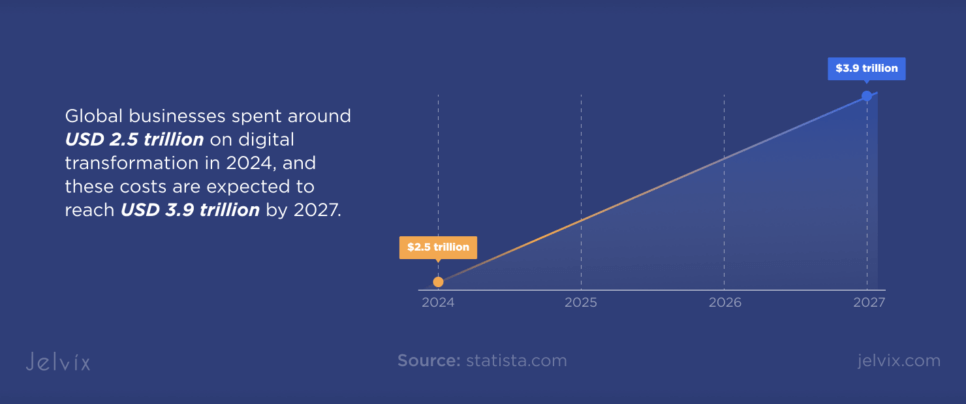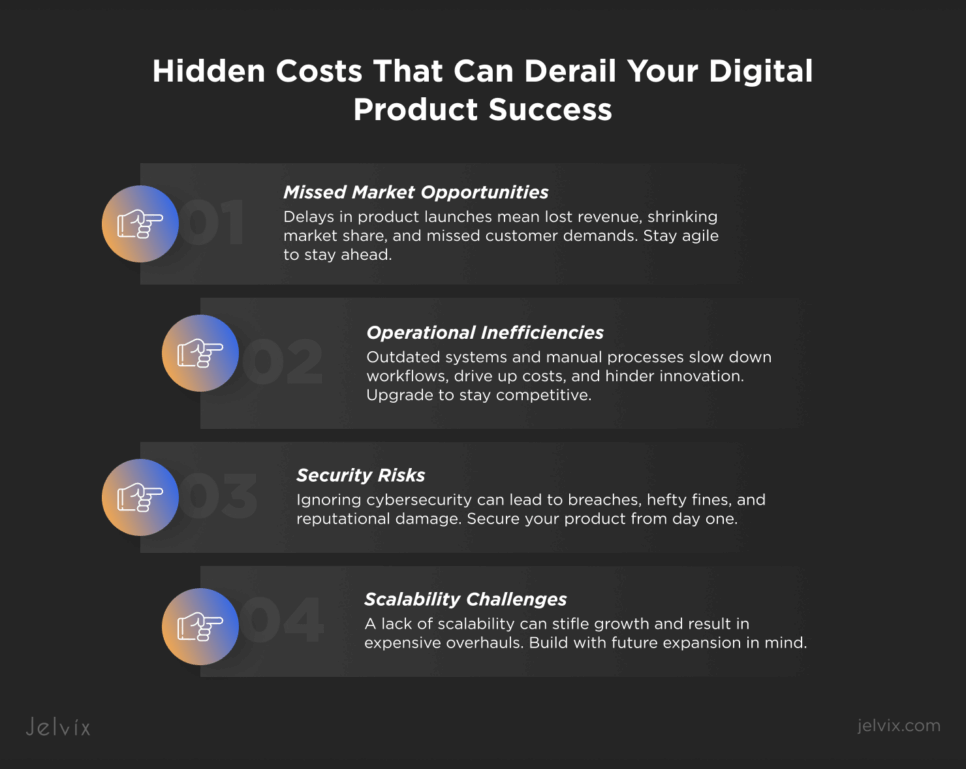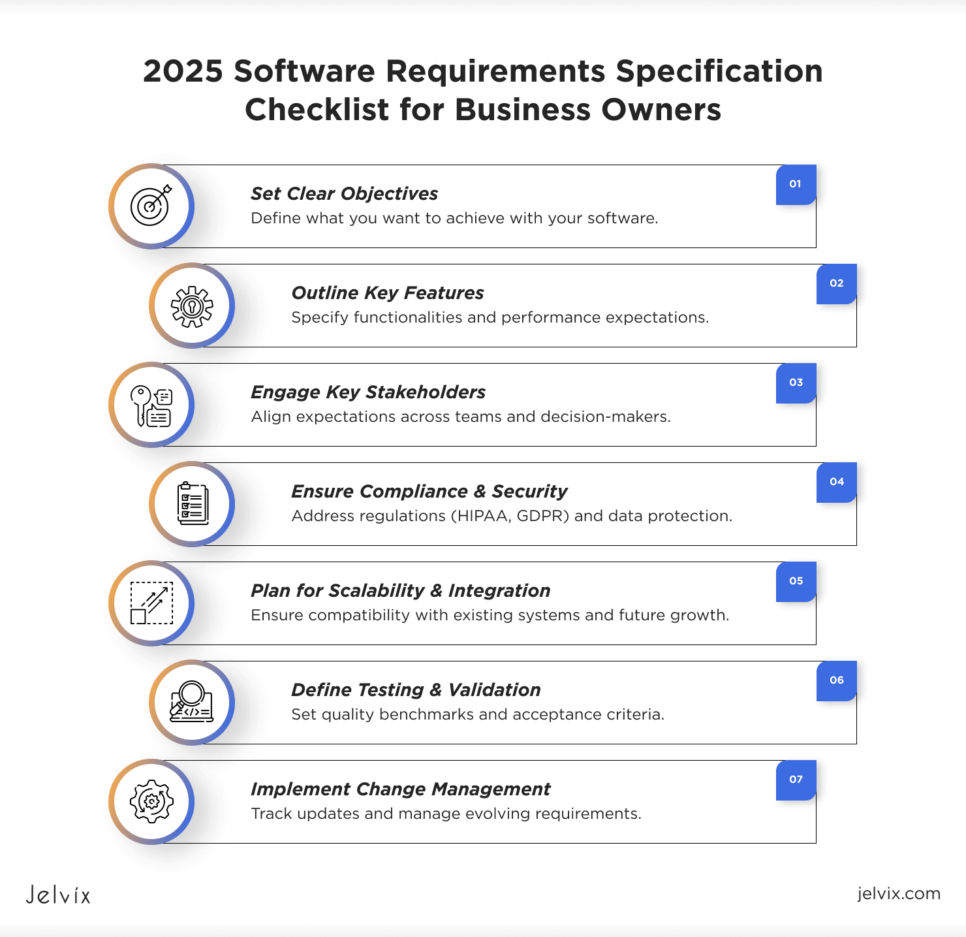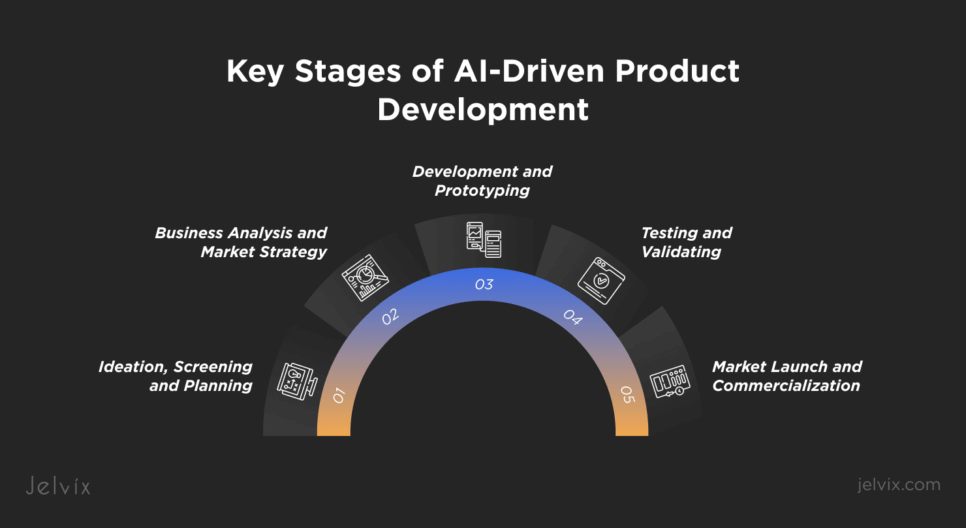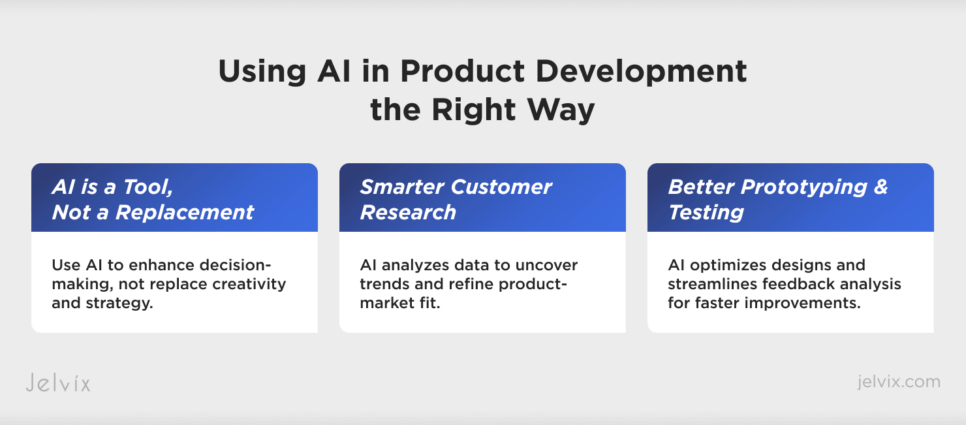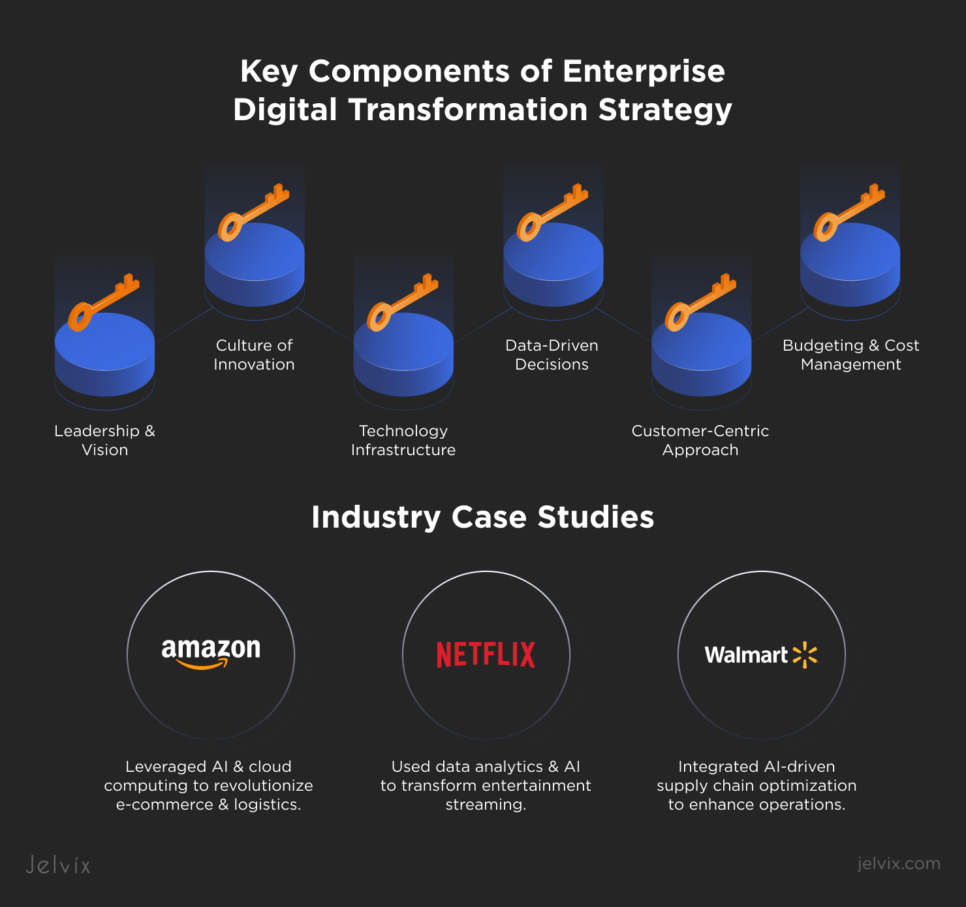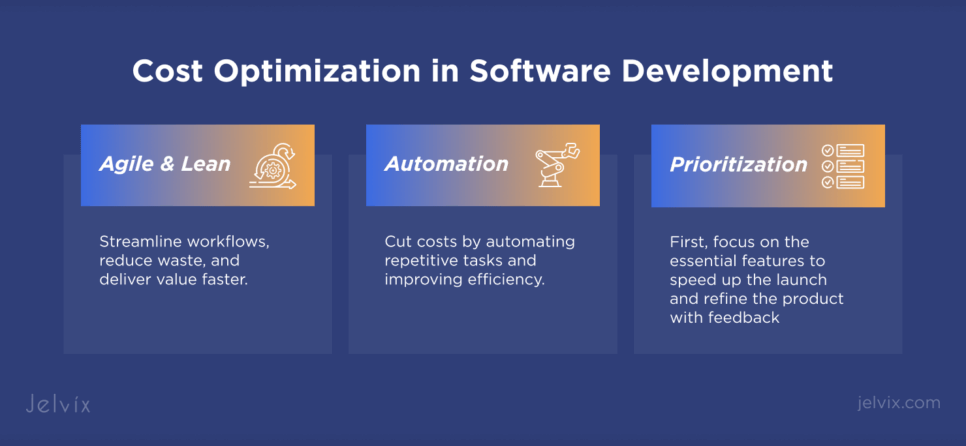Modern enterprises are getting more digitalized as technologies like AI are receiving wider adoption in key business areas. Companies that aim to win the market competition put greater effort into optimizing their product development life cycle and digitalizing their operations.
Global businesses spent around USD 2.5 trillion on digital transformation in 2024, and these costs are expected to reach USD 3.9 trillion by 2027. However, even the most ambitious product development plan can sometimes go off course. Delays, unexpected costs, and missed opportunities are just a few issues that can arise.
If you want to optimize your business processes with the help of digital transformation, read this article. You’ll find out how to overcome common issues using a strategic and methodical approach to business growth and avoid costly mistakes on your way to perfection.
Hidden Expenses That Can Impact the Success of Your Digital Product Development
One of the key aspects of implementing digital transformation and optimizing product development successfully is to keep track of all associated costs. Numerous hidden expenses that often come from process inefficiencies and security risks can compromise the success of your project. You need to address them to achieve high ROI and meet complex market demands.
Missed Market Opportunities: The Price of Slow and Inefficient Product Launches
If you take too long to launch your product, you risk losing valuable opportunities in the market. When your product doesn’t meet everchanging customer expectations, competitors can easily beat you—you’ll lose revenue and your market visibility decreases. You need to streamline your development process and launch quickly to stay ahead.
Operational Inefficiencies: How Outdated Systems Slow Things Down
Using legacy systems can slow down your entire operation, causing delays and reducing productivity. Manual tasks, slow software, and incompatible systems create bottlenecks in your workflows. These inefficiencies not only cost you time and money but also make it harder to innovate and stay competitive. Updating your systems to modern solutions can help keep running your digital products smoothly.
Security Risks: The Impact of Ignoring Software Security and Scalability
If you don’t prioritize security during digital transformation, you can face costly problems later. Cybersecurity breaches can expose sensitive data, lead to fines, and damage your reputation. What’s more, neglecting scalability can limit growth as your product attracts more users. Start with secure and scalable solutions to protect your business and grow it safely.
The Role of a Clear Technical Requirements Document and QA in Your Business Success
The foundation of any successful digital product starts with clear requirements and a solid quality assurance strategy. Businesses that don’t have a clear plan often end up wasting time and resources on fixing issues that could have been avoided.
Focus on well-defined project requirements and integrate QA from the start to prevent costly mistakes and ensure your product is ready for the market.
Costly Consequences of Poor SRS: A 2025 Checklist for Business Owners
A Software Requirements Specification document is what you need to define the scope and expectations of a project. Note that the requirements must be complete and clear, as a poorly written document can lead to misunderstandings inside your development team, frequent reworks, and costly delays.
Businesses that fail to create a clear and comprehensive SRS will likely face:
- Scope creep: unclear requirements lead to constantly changing project goals, making it harder to stay on track and within budget;
- Increased costs: rework because of poor requirements adds unnecessary expenses and often results in launch delays;
- Quality issues: the final product might not meet user expectations without a clear foundation, causing customer dissatisfaction and additional support costs.
To avoid these issues in 2025, make sure you can do everything noted in this checklist:
- Define Clear Objectives: Understand what you want to achieve with your product.
- Detail Functionality: Be specific about the features and performance expectations.
- Involve Key Stakeholders: Ensure everyone affected by the product is on board from the start.
- Review and Validate: Double-check the SRS for clarity and completeness before moving forward.
- Address Compliance and Security: Ensure to meet the regulatory requirements and take respective data protection measures.
- Plan for Integration and Scalability: Ensure the solution integrates well with existing systems and can scale for future growth.
- Set Testing and Validation Criteria: Define clear testing protocols to ensure the product meets the requirements.
- Create a Version Control and Change Management Plan: Constantly track changes and manage updates throughout development.
This checklist can serve as a roadmap to help you ensure every step of your product development process is well-planned and prepared.
How Integrating QA Early Prevents Expensive Rework
QA isn’t something that should be tacked on at the end of the project. When QA is integrated into the process early, you can detect potential issues on time and fix them before they grow into complex and expensive problems.
Addressing defects as they arise leads to less backtracking and fewer revisions down the road. Also, by conducting comprehensive tests throughout development, your team can ensure that the product aligns with user needs, which reduces costly post-launch fixes.
Discover how we built a custom Real Estate CRM that streamlines sales, automates workflows, and boosts client engagement.
AI in Product Development: Key Steps To Consider
The AI market surpassed USD 184 billion in 2024 and is seen to reach USD 26 billion by 2030. It means that all enterprises will eventually need to integrate AI into their operations. However, success will come to those who understand how to use AI effectively without disrupting their product development processes.
Essential Stages of Product Development Using AI Possibilities
When developing a product with the use of AI, it is important not to chase trends and approach the development gradually.
Ideation, Screening and Planning
To start with, businesses need to identify market gaps and customer pain points. AI can play a significant role in this process by analyzing market trends and predicting customer needs. The key here is to use AI’s data-crunching abilities thoughtfully and validate its output through research and customer feedback.
Business Analysis and Market Strategy
AI-powered tools can help analyze large data sets to predict trends, customer preferences, and competitor strategies giving you valuable insights to refine your market strategy. However, you need to ensure that your business analysis is based on real-world data and not just AI-generated suggestions.
Development and Prototyping
Once you validate your product’s concept, it’s time to build a prototype. AI can speed up the development process by automating coding, suggesting improvements, and even designing user interfaces or their components. Still, you need to remember that AI is a tool to assist your team and not replace human creativity, intuition, and expertise.
Testing and Validating
AI can be invaluable during the testing phase as it can automate repetitive tasks and identify bugs in real time. However, integration testing for complex systems requires human oversight to ensure everything works cohesively.
Market Launch and Commercialization
The final step involves bringing the product to market. AI can assist by predicting the right timing for launches based on market trends and consumer behaviors. Moreover, AI-driven marketing tools can personalize promotions, segment target audiences, and optimize ad spend. However, human expertise should prevail in identifying how to position the product for maximum impact.
How To Use AI in Product Development Correctly
AI is a powerful tool, but you need to understand how to use it effectively in your product development journey.
AI Is a Tool, Not a Solution
While AI can provide insights and speed up certain processes, it is just an instrument. Don’t consider it a replacement for creativity and strategy. It’s better to integrate AI into your workflows to enhance human decision-making and not replace it entirely.
Using AI To Augment Customer Research
One of the most powerful use cases for AI lies in understanding customer needs and preferences. AI can analyze vast amounts of customer data from multiple sources, identifying patterns that would be difficult or time-consuming for humans to uncover. This can help you build products that truly meet the needs of your target audience.
Discover how we developed an AI-powered chatbot with a focus on ethical AI, ensuring seamless user interactions while maintaining privacy and compliance.
Other Suitable Use Cases for AI
Beyond customer research, you can use AI to enhance prototyping, testing, and monitoring. AI tools can help design prototypes by suggesting efficient features and improvements based on historical data. What’s more, AI can be used to monitor real-time user feedback during the testing phase, making it easier to refine your product before launch.
Key Components of Enterprise Digital Transformation Strategy
A well-defined digital transformation strategy can help you use technology correctly, stay competitive, and meet changing consumer demands. It consists of several components businesses should focus on to develop their products with maximum efficiency.
How To Ensure Digital Transformation Success: Key Tips
To ensure successful digital transformation, you need to set clear goals, use the right technologies, and focus on improving processes while keeping customers in mind.
Leadership and Vision
Successful digital transformation starts at the top—a clear vision and strong leadership help to guide your company through the process. C-suite executives must be committed to the transformation and inspire their teams to embrace it.
Culture of Innovation
Digital transformation requires a culture that encourages innovation and experimentation. You need to create an environment where employees feel empowered to suggest new ideas, use new tech, and collaborate across departments to create innovative solutions.
Technology Infrastructure
If you aim to develop new products, you can’t keep working with old systems that were efficient back then. Digital transformation requires upgrading outdated systems, integrating new technologies such as AI, cloud computing, and automation tools, and ensuring strong cybersecurity measures that correspond to the modern world.
Using Data To Drive Decisions
Everything starts from the concept, but it’s data that must impact key decisions in product development. Collecting, analyzing, and using data to make informed decisions will help your businesses stay agile, enhance customer experiences, and optimize operations.
Customer-Centric Approach
Any digital transformation effort should involve a customer-first mindset. Your business should be able to deliver tailored solutions, improve communication, and enhance overall customer satisfaction.
Successful Enterprise Digital Transformations: Case Studies
It’s never too late to learn from someone else’s success, and analyzing cases of rewarding digital transformation can help you spot the best practices that might work for your business.
Amazon: From Selling Books to Joining the Big Five
Amazon’s digital transformation started with a goal to improve customer experience and make operations more efficient. The company invested in e-commerce early and built AWS, a powerful cloud service, to ensure faster and more reliable work. Automation sped up order processing, while AI personalized product recommendations. As a result, Amazon grew into a leader in online shopping and cloud services.
Netflix: from Rental Services to Global Streaming
Netflix’s transition from a DVD rental service to a streaming powerhouse is one of the prime examples of successful digital transformation. The company used data analytics, AI, and ML to offer personalized content recommendations. By adopting cloud computing, they efficiently managed their global server network to deliver streaming services worldwide.
Walmart: Using AI To Enhance Supply Chains
Walmart focused its digital transformation strategy on improving customer experience and operational efficiency. By integrating AI and automation into its supply chain, the retail giant enhanced its inventory management and logistics. Walmart also implemented e-commerce capabilities to compete with global online retailers like Amazon.
How Digital Transformation Can Improve Systems Operational Decisions in Healthcare
In healthcare, digital transformation can lead to improved operational decisions, enhanced patient care, and more efficient management of resources.
Real-Time Data and Analytics
Hospitals that implement digital transformation strategies can access real-time data and analytics to improve clinical decision-making. By using machine learning and AI in healthcare, clinics can predict patient outcomes, identify health risks, and make adequate decisions about treatment plans.
Improved Resource Allocation
Hospitals can optimize resource management and reduce costs through digital tools. Predictive analytics can help clinics anticipate staffing needs, patient flow, and inventory levels. This way, they can use resources more efficiently, improving patient care without overburdening the staff and infrastructure.
Enhanced Patient Care
Digital solutions, such as EHRs, telemedicine, and patient monitoring systems, enable healthcare providers to offer more personalized and accessible care. By integrating these systems, clinics can offer continuous care, track treatment progress, and improve communication with patients.
Budgeting and Cost of Digital Transformation
One of the most critical aspects of digital transformation is budgeting. While the upfront costs of implementing digital tools can be high, the long-term ROI often outweighs the initial investment.
Initial Investment in Technology
Companies need to allocate funds for upgrading existing infrastructure, purchasing new software, and adopting new tools. The costs of cloud computing, AI implementation, and employee training must be accounted for in the initial budget.
Ongoing Maintenance and Support
Maintaining and updating digital solutions is an ongoing expense. Companies should factor in costs related to software upgrades, cloud hosting, data security measures, and IT support teams.
Training and Change Management
Successful digital transformation also means that employees know how to use new tools efficiently. You need to consider budgeting for employee training and change management initiatives to ensure the smooth adoption of new tools and processes.
Strategies for Cost Optimization in Software Development and Digital Transformation
As companies aim to build efficient and scalable systems, they need to focus on optimizing costs without sacrificing value. You can follow a few proven strategies to reduce expenses and maximize ROI during product development and digital transformation.
Agile and Lean Project Management Methodologies
Agile and lean methods help teams work more efficiently by focusing on what matters most. With agile, teams work in short cycles, allowing them to deliver value faster. Lean helps reduce waste, focusing only on what’s important and cutting out unnecessary steps or features. Together, these approaches help businesses stay on track and avoid wasting resources.
Automating Manual Processes
Automation helps optimize repetitive tasks, reduce labor costs, and improve operational efficiency. By automating data entry, customer support, and other manual functions, businesses can free up resources for more strategic initiatives.
Prioritizing High-Impact Features
When building a new product or service, focus on the features that matter the most to customers and businesses. Rather than developing everything at once, focus on the most valuable aspects first. This will help launch products quicker and allow teams to test and improve based on real customer feedback.
How Jelvix Helps Businesses Optimize Product Development and Digital Transformation
Adopting digital transformation is critical for businesses to stay competitive and ensure long-term success in the modern world. While the process can be complex, the right strategy can lead to better efficiency, reduced costs, and increased ROI.
At Jelvix, we specialize in helping businesses optimize their product development processes, integrate existing digital tools into set workflows, and develop digital transformation solutions from scratch. Reach out for a consultation if you need professional advice. Our experts will provide tailored strategies to help optimize your product development efforts and ensure sustainable business growth.
Need expert developers for your project?
Assemble a dedicated team tailored to your needs, working exclusively for you.


